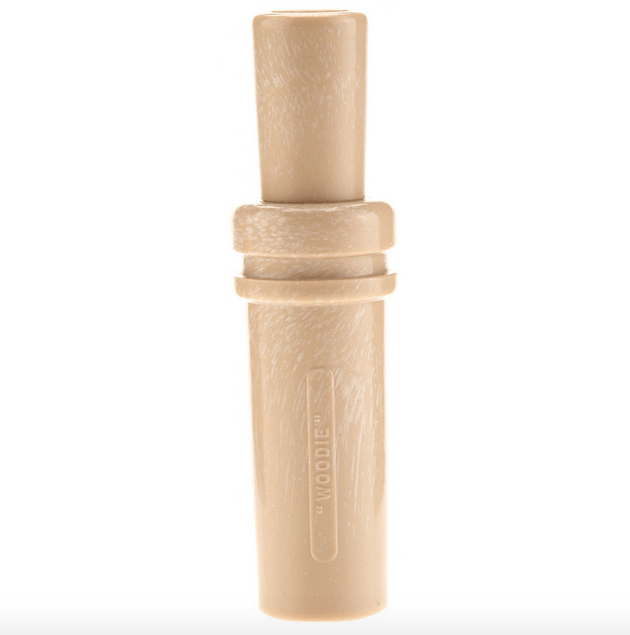Choosing a duck call can be confusing, especially for beginners. There are numerous options to consider, and experienced callers often have their preferences. Beginners should keep an open mind and consider various factors when selecting a call.
One essential factor is the material of the call: wood or plastic (acrylic or polycarbonate). Each material produces a distinct sound and tonal range. Wood calls typically have a raspier and more nasal sound, often described as “ducky,” but this can vary depending on the type of wood used. Acrylic calls, on the other hand, are generally louder and sharper with a wider tonal range.
Making a Duck Call Choice
The choice between wood and acrylic also affects moisture absorption. Wood absorbs moisture and swells, leading to more sound variation. Experienced callers can adjust to these changes, but novices may find acrylics or polycarbonates more consistent.
Polycarbonate calls are popular due to their affordability and sound qualities. They are easy to fine-tune and produce sharp notes. Polycarbonates can be tuned to produce high, sharp, and raspy notes when a lot of air is pushed through them.
Truly speaking, the choice of a duck call solely depends on your needs, including how it feels in your hand, how hard you can blow it, and what sounds match your perception of a hen mallard. Different situations may call for different calls, such as loud acrylic or poly calls for grabbing a flock’s attention on windy days and softer wood calls for close encounters with late-season ducks.
How to Choose a Duck Call
Choosing the right duck call depends on your preferences and needs. In my previous post, I listed the Best Affordable Duck Calls to Buy Right Now at Amazon for Hunting Beginners and Pros. Moving on, here are some steps to help you make the right choice:
- Identify Your Skill Level:
- Beginner: Start with a single-reed call, which is easier to learn.
- Intermediate/Advanced: Consider a double-reed or even a triple-reed call for more control.
- Determine the Type of Ducks You Hunt:
- Mallards: Opt for a versatile call that can mimic their quacks.
- Other Ducks: Research specific calls that imitate the sounds of the ducks you’re targeting.
- Choose the Reed Type:
- Single-Reed: Offers simplicity and volume.
- Double-Reed: Provides more control and versatility.
- Triple-Reed: Offers the most control but can be harder to master.
- Consider Material and Construction:
- Acrylic: Durable and produces clear, crisp sounds.
- Polycarbonate: Affordable and suitable for beginners.
- Wood: Traditional and offers unique tones but may require more maintenance.
- Test the Call:
- Try different calls to see which one feels comfortable and sounds natural to you.
- Practice using the call to ensure you can control it effectively.
- Ask for Recommendations:
- Ask experienced duck hunters or check online reviews for recommendations.
Choosing a duck call is a personal preference, so what works for one hunter may not work for another. I will advise you to practice and become proficient with your chosen call to maximize your hunting success.
What is the difference between Wood, Plastic and Acrylic Duck Call?

Wood, plastic, and acrylic are the primary materials used to make duck calls, and each has its advantages and characteristics. Here’s a comparison of these materials for duck calls:
Wood Duck Calls:

- Traditional Appeal: Wood calls are popular among hunters for their classic and aesthetically pleasing appearance.
- Unique Tones: Different wood types, such as cocobolo, maple, and walnut, produce unique and natural sounds that can mimic various duck species.
- Warm Tones: Wood calls tend to create warmer and mellower duck sounds.
Plastic Duck Calls (Polycarbonate):

- Affordability: Plastic duck calls are typically more budget-friendly than wood or acrylic options, making them a good choice for beginners.
- Durability: Polycarbonate calls are resistant to moisture and less likely to warp or crack, making them suitable for wet hunting conditions.
- Versatility: Many plastic calls are designed to mimic a range of duck species and produce clear, crisp sounds.
Acrylic Duck Calls:

- Superior Sound Quality: Acrylic calls are known for their ability to produce loud, clear, and sharp duck sounds. They are often favored by experienced hunters.
- Durability: Acrylic is exceptionally durable and can withstand harsh outdoor conditions without warping or deteriorating.
- Versatility: Acrylic calls are versatile and can imitate a wide variety of duck calls with precision.
What you Must do as a Hunter will Using Duck Call
Field Hudnall, a World Live Duck Calling Champion, recommends trying different calls and giving each one time to build up breath condensation under the reed, as this affects the sound. It is a good idea to find a call that you can blow consistently and that produces the sounds you like. There’s no right or wrong answer; it comes down to personal preference.
Conclusion
I will tell you proudly that the choice between wood, plastic, or acrylic duck calls comes down to personal preference, hunting conditions, and budget. Each material has its unique characteristics, and experienced hunters often have specific preferences based on the sounds they want to produce and the conditions they hunt in. Beginners may find plastic calls a good starting point due to their affordability and durability, while seasoned hunters may opt for acrylic for its superior sound quality.
In summary, choosing a duck call involves considering material, sound preferences, hunting conditions, and personal comfort with the call’s operation. The key is to select a call that suits your style and allows you to produce the desired duck sounds effectively.
Related Posts
- Top 7 Tactics for Calling Ducks When Hunting in the Woods for a Kill
- Eight Duck Calls Every Duck Hunter Must Master this Hunting Season
- How to Remove a Hickey in Seconds Using Toothpaste
- How to Effectively Increase your Brain Power to Boost Study
- 100 Best White NBA Players in Basket Ball History in Pictures
- Find Your Dream Job Here to Launch Your Career – Future starts
- How Many Grams is in a Pound? Converter Grams, Pounds & Ounces







